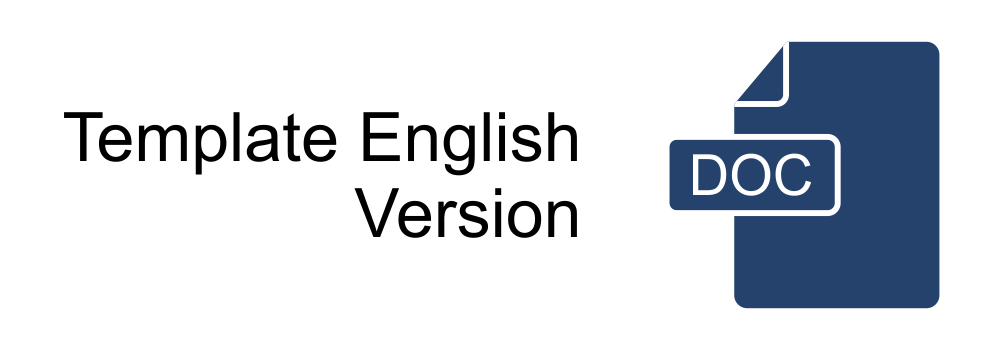Metadiscourse Markers in CNN Health News Articles
Abstract
This study aims to identify the types and functions of metadiscourse markers used in CNN health news articles. This study is conducted by applying a qualitative method. The sources of data are fifteen CNN health news articles, while the data are the sentences about Coronavirus Disease-2019 that have metadiscourse markers categories. The result of the study shows that there are 2 types and 11 functions in CNN health news articles. The types of metadiscourse markers are interactive and interactional metadiscourse. Kinds of interactive metadiscourse found in CNN health news articles are transition, frame marker, evidential, and code gloss. Meanwhile, kinds of interactional metadiscourse found in CNN health news articles are hedges, boosters, attitude markers, and engagement markers. However, endophoric marker and self-mention are not found in the articles. The functions identified are adding an idea to the article, comparing and contrasting statements in the article, drawing a conclusion or countering ideas in the writer’s statement, establishing a clear dialog for readers, explicitly mentioning sources of information, exemplifying something in the discourse, elaborating of what the writer has been written, show that the statement of the writer is more of a reasonable opinion than a fact, emphasizing or clarifying a statement, show the writer's or speaker's attitude towards the proposition, and explicitly addresses readers to focus their attention or include them into the discourse.
AbstrakPenelitian ini bertujuan mengidentifikasi jenis dan fungsi pemarkah metawacana dalam artikel berita kesehatan CNN. Penelitian ini dilakukan dengan metode kualitatif. Sumber datanya adalah lima belas artikel berita kesehatan CNN. Data berupa kalimat tentang Coronavirus Disease-2019 yang memiliki pemarkah metawacana. Hasil penelitian menunjukkan bahwa ada 2 jenis dan 11 fungsi pemarkah metawacana dalam artikel berita kesehatan CNN. Dua jenis pemarkah itu ialah metawacana interaktif dan interaksional. Jenis metawacana interaktif yang ditemukan dalam artikel berita kesehatan CNN adalah transition, frame marker, evidential, dan code gloss. Jenis metawacana interaksional yang ditemukan adalah hedges, booster, attitude marker, dan engagement marker. Endophoric marker dan self-mention tidak ditemukan dalam artikel. Sementara itu, sebelas fungsi yang teridentifikasi adalah menambahkan ide pada artikel, membandingkan dan mengontraskan pernyataan dalam artikel, menarik simpulan atau melawan ide dalam pernyataan penulis, membangun dialog yang jelas bagi pembaca, menyebutkan sumber informasi secara eksplisit, mencontohkan sesuatu dalam wacana, menguraikan apa yang telah ditulis, menunjukkan bahwa pernyataan penulis lebih merupakan pendapat yang masuk akal daripada fakta, menekankan atau memperjelas pernyataan, menunjukkan sikap penulis atau pembicara terhadap proposisi, dan secara eksplisit ditujukan kepada pembaca untuk memusatkan perhatian mereka atau memasukkan mereka ke dalam wacana.
Keywords
Full Text:
PDFReferences
Adel, A. (2006). Metadiscourse in L1 and L2 English (Vol. 24). John Benjamin Publishing Company. https://doi.org/10.1075/scl.24
Burhan, B. (2006). Sosiologi Komunikasi. Jakarta: Kencana Prenada Media.
Croteau, D. H. W. & Milan, S. (2012). Media Society. Industries, Images, and Audiences. London: Sage Publications.
Firoozian, A., Khajavy, H., & Vahidnia, F. (2012). A contrastive study of metadiscourse elements in research articles written by Iranian applied linguistics and engineering writers in English. English Linguistics Research, 1(1), 88–96. https://doi.org/10.5430/elr.v1n1p88
Herriman, J. (2022). Metadiscourse in English instruction manuals. English for Specific Purposes, 65, 120–132. https://doi.org/10.1016/j.esp.2021.10.003
Huh, M.-H., & Lee, I. H. (2016). On the use of metadiscourse in EFL undergraduate student writing. English Teaching, 71(3), 99–120.
Hyland, K. (2005). Metadiscourse: Exploring Interaction in Writing. London: Continuum.
Kholifah, S. (2020). A study of metadiscourse markers in Greta Thunberg’s speeches. Unpublished Thesis. Univ. of Trunojoyo.
Kurniawan, A. (2005). Transformasi Pelayanan Publik. Jakarta: Pembaruan.
Mahmood, R., Javaid, G., & Mahmood, A. (2017). Analysis of metadiscourse features in argumentative writing by Pakistani undergraduate students. International Journal of English Linguistics, 7(6), 78–87. https://doi.org/10.5539/ijel.v7n6p78
Martin, J. R., & Rose, D. (2003). Working with Discourse: Meaning Beyond the Clause. London: Bloomsbury Publishing.
McQuail, D. (2000). Mass Communication Theories (4th ed.). London: Sage Publications.
Milne, E. D. (2008). The pragmatic role of textual and interpersonal metadiscourse markers in the construction and attainment of persuasion: A cross-linguistic study of newspaper discourse. Journal of Pragmatics, 40(1), 95–113. https://doi.org/10.1016/j.pragma.2007.10.003
Moleong, L. J. (2015). Metodologi Penelitian Kualitatif. Bandung: Remaja Rosdakarya.
Nugrahani, V. E., & Bram, B. (2020). Metadiscourse markers in scientific journal articles. Langkawi: Journal of The Association for Arabic and English, 6(1), 1–16.
https://doi.org/10.31332/lkw.v6i1.1528
Nugroho, A. (2020). Investigating the use of metadiscourse markers by American and Indonesian writers in opinion and business articles. Journal of English Language and Culture, 10(2), 75–87. https://doi.org/10.30813/jelc.v10i2.2138
Tashi, T., & Suksawas, W. (2018). Investigating the use of metadiscourse markers by American and Indonesian writers in opinion and business articles. International Journal of Engineering and Technology, 7(4.38), 975–979. https://doi.org/10.14419/ijet.v7i4.38.27620
Tharenou, P., Donohye, R., C. (2007). Management Research Method. New York: Cambridge University Press.
Wei, J., Li, Y., Zhou, T., & Gong, Z. (2016). Studies on metadiscourse since the 3rd millennium. Journal of Education and Practice, 7(9), 194–204.
Yunus, S. (2010). Jurnalistik Terapan. Bogor: Ghalia Indonesia.
Zareifard, R., & Alinezhad, B. (2014). A study of interactional metadiscourse markers and gender in the defense seminars of Persian speakers. Journal of Educational and Social Research, 4(1), 231–238. https://doi.org/10.5901/jesr.2014.v4n1p231
DOI: https://doi.org/10.26499/surbet.v17i1.329
Refbacks
- There are currently no refbacks.

This work is licensed under a Creative Commons Attribution-NonCommercial-ShareAlike 4.0 International License.
This work is licensed under a Creative Commons Attribution-NonCommercial-ShareAlike 4.0 International License.











